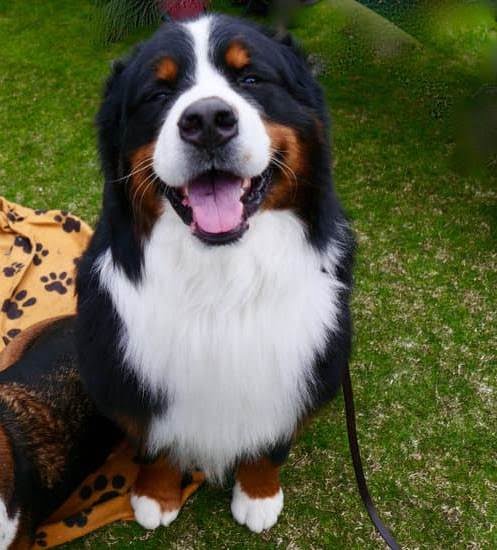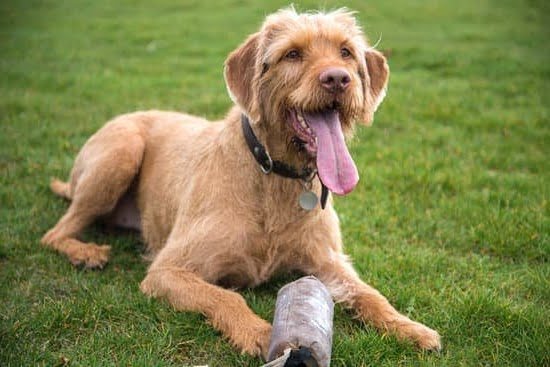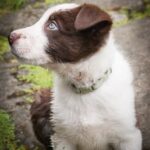How would Rome train guard dogs? Guard dogs played a crucial role in ancient Rome, serving as protectors in both warfare and security. They were used in the military, as well as in households to safeguard property and people. This article delves into the history of guard dogs in Ancient Rome, exploring the breeds commonly used, training techniques, and the legacy they left on modern guard dog training.
In ancient Rome, guard dogs were not just pets; they were valuable assets. As loyal companions and fierce protectors, they were an essential part of Roman society. Whether defending against external threats or internal security issues, the presence of well-trained guard dogs was indispensable.
The use of guard dogs was not limited to the battlefield. In fact, guard dogs were commonly employed in Roman households to protect property and ensure the safety of its inhabitants. The methods and techniques used to train these guardian canines reflected the importance placed on their role within Roman society.
History of Guard Dogs in Ancient Rome
Guard dogs played a vital role in ancient Rome, serving not only as protectors of households but also as important assets in the military. In warfare, guard dogs were used to patrol and protect the perimeters of Roman camps and fortifications. They were also employed to accompany soldiers on patrols, adding an extra layer of security and alertness. The mere presence of these formidable animals often served as a deterrent to potential intruders or adversaries.
In addition to their role in warfare, guard dogs were also used for security purposes within the city of Rome itself. Wealthy households often kept guard dogs to protect their property and family members from theft and other threats. These loyal companions were trained to detect intruders, raise alarm through barking, and even attack if necessary to fend off any potential danger.
The use of guard dogs in warfare and security was favored due to their keen sense of smell, acute hearing, speed, and strength. These characteristics made them invaluable assets in detecting and deterring possible threats.
Moreover, their loyalty and protective instinct toward their masters made them highly reliable companions on the battlefield as well as in everyday life. Overall, the history of guard dogs in ancient Rome reflects not only their significance as protectors but also the strong bond between humans and canines that has persisted throughout history.
- Guard dog teams patrolling Roman camps
- Use of guard dogs for household protection
- Role of guard dogs in deterring potential threats
Characteristics of Ideal Guard Dogs
Guard dogs played a crucial role in ancient Rome for protecting property, livestock, and even in military operations. The Romans carefully selected and trained specific breeds for guarding duties based on their unique characteristics. Here are some of the most commonly used breeds for guard dog duties in ancient Rome:
- Molossus: The Molossus is one of the most famous guard dog breeds in ancient Rome. Known for their large size and powerful build, these dogs were often used in military campaigns and to guard valuable assets.
- Canis Pugnax: This ancient breed was highly valued by the Romans for its fierce nature and loyalty. Canis Pugnax were often used as guardians of estates and were known for their protective instincts.
- Mastiff: Mastiffs were prized for their strength, courage, and protective nature. They were commonly used to protect homes, livestock, and to accompany soldiers on the battlefield.
These breeds were chosen not only for their physical attributes but also for their intelligence, loyalty, and instinctual drive to protect. The Romans understood the importance of selecting the right breed for specific guarding tasks.
The careful selection of these ideal guard dog breeds demonstrates how important it was for the Romans to have reliable protectors in both civilian and military settings. Their use of specific dog breeds has left a lasting legacy on modern guard dog training techniques, as breed characteristics are still a crucial consideration in training programs today.
Training Techniques in Ancient Rome
Guard dogs played a crucial role in ancient Rome, serving as protectors in both military and domestic settings. The Romans trained their guard dogs to perform specific tasks, such as patrolling, tracking, and attacking on command. One of the most common training techniques used in ancient Rome was positive reinforcement.
This involved rewarding the guard dogs with treats or praise when they successfully completed a task. Additionally, repetition and consistency were key components of training, with the Romans dedicating time and effort to ensure that their guard dogs were well-prepared for their duties.
The ancient Romans also utilized socialization as a training technique for their guard dogs. They exposed the dogs to various environments, people, and animals to ensure that they were comfortable and confident in different situations. This helped to prevent fear or aggression towards unfamiliar stimuli, making the guard dogs more effective in their roles. Furthermore, physical conditioning was an essential aspect of training, with the Romans incorporating exercises and drills to increase their guard dogs’ strength and stamina.
Overall, the training techniques used by the ancient Romans were foundational in shaping the role of guard dogs in Roman society. These methods emphasized discipline, obedience, and resilience in preparing guard dogs for their specific tasks. The legacy of Roman guard dog training continues to influence modern techniques, highlighting the enduring impact of ancient Roman practices on the development of working canine companions today.
| Ancient Roman Guard Dog Training Techniques | Description |
|---|---|
| Positive Reinforcement | Rewards such as treats or praise for completing tasks successfully |
| Socialization | Exposure to various environments, people, and animals to prevent fear or aggression |
| Physical Conditioning | Incorporating exercises and drills to increase strength and stamina |
Role of Guard Dogs in Roman Society
Guard dogs played a crucial role in ancient Roman society, serving both in the household and in the military. In the ancient Roman household, guard dogs were employed to protect the property and its inhabitants. They were trained to be fiercely loyal and protective, making them an effective deterrent against intruders and potential threats. Additionally, guard dogs were often used to accompany shepherds as they tended to their flocks, providing protection against predators.
Guard Dogs in the Military
In the military, guard dogs were enlisted for a variety of tasks, including sentry duty, patrolling, and even combat. These specially trained dogs would accompany Roman soldiers on campaigns and expeditions, providing an additional layer of security. Their keen senses and natural instincts made them valuable assets in detecting enemies or ambushes. Guard dogs were also utilized for their tracking abilities, aiding in reconnaissance missions and locating missing persons or objects.
Training Methods
To prepare guard dogs for their roles in both the household and the military, specific training methods were employed in ancient Rome. The Romans understood the importance of early socialization and obedience training for these animals. Guard dogs were taught to respond to commands from their handlers and to distinguish between friend and foe. Additionally, they underwent rigorous physical conditioning to ensure they were fit for their duties.
The bond between a guard dog and its handler was of paramount importance in ancient Rome. Handlers would form strong connections with their canine companions through consistent training, care, and mutual trust. This bond not only enhanced the effectiveness of the guard dog but also fostered a deep sense of loyalty between both parties.
Equipment and Tools Used for Guard Dog Training in Ancient Rome
In ancient Rome, the training of guard dogs was a crucial aspect of maintaining security in both households and military settings. The Romans understood the importance of equipping their guard dogs with the right tools and equipment to ensure that they were effective in their roles. From collars to leashes, the equipment and tools used for guard dog training in ancient Rome were carefully chosen to shape these animals into formidable protectors.
Collars and Leashes
One of the most basic yet important pieces of equipment used for training guard dogs in ancient Rome were collars and leashes. Collars were typically made of leather and could be adorned with metal spikes or studs for added protection. Leashes, on the other hand, were often made of strong, durable materials such as leather or rope. These tools were essential for controlling a guard dog’s movements during training exercises and ensuring that they followed commands from their handlers.
Training Whips
Training whips were also commonly used in ancient Rome to train guard dogs. These whips were not meant to inflict harm on the animals, but rather to provide auditory cues that reinforced obedience and discipline. By cracking the whip or using it to make rhythmic sounds, handlers could communicate specific commands to the dogs and shape their behaviors through positive reinforcement.
Protective Gear
In addition to standard collars and leashes, Roman guard dogs were often equipped with protective gear such as metal-plated harnesses or muzzles. These items served multiple purposes – they provided physical protection against potential threats while also signaling to others that the dog was trained and ready for combat or defense. This gear instilled fear in potential intruders while also ensuring that the dog could carry out its duties effectively.
These tools and equipment played a pivotal role in shaping guard dogs into effective protectors in ancient Rome. The combination of careful training techniques along with specially designed gear contributed to the formidable reputation of Roman guard dogs throughout history.
Famous Guard Dogs in Ancient Rome
Guard dogs played a crucial role in ancient Rome, and many of them achieved legendary status for their incredible bravery and loyalty. One famous guard dog in Roman history was “Celer,” who was known for his exceptional speed and agility.
Celer was owned by a wealthy Roman merchant and was said to have thwarted numerous burglary attempts with his swift and aggressive nature. His reputation grew to the point that just the sight of him patrolling the merchant’s property was often enough to deter potential intruders.
Another renowned guard dog from ancient Rome was “Ferox,” whose name means “fierce” in Latin. Ferox was celebrated for his fearlessness and ferocity when defending his owner’s estate from threats. Legends tell of how Ferox single-handedly fought off a pack of wolves that had encroached on his master’s land, displaying unmatched courage and strength in the face of danger.
Additionally, there are accounts of a guard dog named “Vigilans,” which translates to “vigilant” or “watchful.” Vigilans was known for his unwavering vigilance and keen sense of alertness, making him an invaluable asset in safeguarding the homes and properties of prominent Roman citizens. His ability to detect potential intruders from afar made him an esteemed protector among the people of ancient Rome.
These stories highlight the significant impact that guard dogs had on Roman society, as their remarkable exploits were admired and revered by many. The tales of Celer, Ferox, and Vigilans serve as enduring testaments to the integral role that guard dogs played in maintaining security and protection during ancient times.
| Guard Dog Name | Description |
|---|---|
| Celer | Known for exceptional speed and agility; thwarted numerous burglary attempts |
| Ferox | Celebrated for fearlessness; fought off a pack of wolves single-handedly |
| Vigilans | Renowned for unwavering vigilance; detected potential intruders from afar |
Legacy of Roman Guard Dogs
In ancient Rome, guard dogs played a crucial role in warfare, security, and protection of households. The training and use of guard dogs were deeply ingrained in Roman society, and the legacy of their methods continues to influence modern guard dog training techniques. The breeding and training of guard dogs were highly specialized tasks in ancient Rome, with specific breeds being sought after for their guarding abilities.
The Romans utilized various techniques to train their guard dogs for specific tasks, including obedience training, scent work, and attack and defense maneuvers. These methods were tailored to the unique needs of each dog and were based on an understanding of canine behavior and psychology. This emphasis on individualized training has had a lasting impact on modern guard dog training, where personalized approaches are also prioritized.
Furthermore, the equipment and tools used for guard dog training in ancient Rome have had a lasting influence on modern practices. From leashes and collars to protective gear and command signals, many of the tools utilized by the Romans remain fundamental to contemporary guard dog training. Overall, the legacy of Roman guard dogs endures in the discipline and precision that characterize modern techniques for breeding, training, and utilizing these exceptional animals.
Frequently Asked Questions
What Were the Guard Dogs in the Roman Empire?
Guard dogs in the Roman Empire were often used to protect property, livestock, and even people. They were trained for various duties such as patrolling, barking at intruders, and sometimes even attacking when necessary.
How Did Romans Treat Dogs?
Romans treated their dogs with a mix of practicality and affection. Dogs were valued for their utility in hunting, guarding, and companionship, but they were also regarded as loyal and faithful creatures deserving of care and attention.
What Breed Did Romans Use as War Dogs?
The Romans primarily used a breed known as Molossus as war dogs. This powerful and intimidating breed was well-suited for combat-related tasks such as guarding outposts, tracking enemies, or even participating directly in battle alongside soldiers.

Welcome to the blog! I am a professional dog trainer and have been working with dogs for many years. In this blog, I will be discussing various topics related to dog training, including tips, tricks, and advice. I hope you find this information helpful and informative. Thanks for reading!





